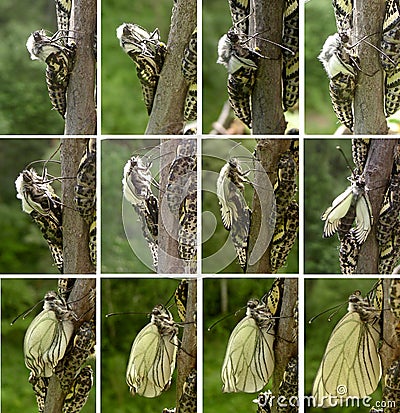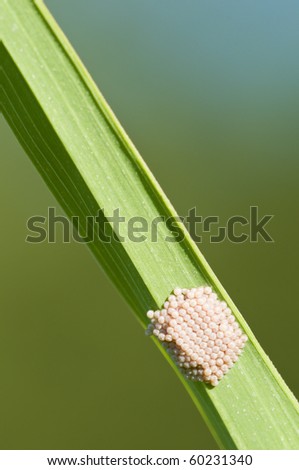Aglais io, the European peacock , more commonly known simply as the peacock butterfly, is a colourful butterfly, found in Europe and temperate Asia as far east as Japan. Find the perfect peacock butterfly caterpillar stock photo. It is a fascinating process from caterpillar to butterfly and I enjoyed recording each stage.

Peacock butterflies can be often seen in the gardens, woodland areas and on the edges of the forests. Population of the peacock butterflies in the nature is stable and they are not listed as endangered species. I know I call them Red Admirals in this. Saturnia pyri, the giant peacock moth, great peacock moth, giant emperor moth or Viennese emperor, is a Saturniid moth which is native to Europe.
This Pin was discovered by Park Fran. Discover (and save!) your own Pins on Pinterest. The peacock butterfly has brownish-red wings, each with a single, large peacock-feather-like eyespot – used to scare predators. It rests with its wings close showing the almost black, well-camouflaged underside. You may learn many peacock butterfly facts.
Download peacock caterpillar stock photos. Affordable and search from millions of royalty free images, photos and vectors. Thousands of images added daily. Thereare some caterpillars that are poisonous, usually these arebrightly colored caterpillars. The caterpillar of the Peacock Butterfly spends most of its time eating so it grows very fast.
It sheds its skin about four times because as it grows it can’t fit into its old skin anymore. This process of shedding is called ‘moulting’ and the period between moulting is called an ‘instar’. Instar refers to the stage of development of a caterpillar. Some are essential and some improve your experience by providing insights into how the site is used. You can opt-out if you wish.
The spines are to discourage predators, while the spotted dark coloration is an adaptation technique for camouflage, as also to release toxic chemicals. With the help of over 0of the world’s best wildlife filmmakers and photographers, conservationists and scientists, Arkive. Peacock Butterfly caterpillar , Inachis iois The larval foodplant of the Peacock Butterfly caterpillar is Common Nettle, (Urtica dioica) also known as the Stinging Nettle. Individual caterpillar species have a particular type of food plant (or family of plants) that it is associated with.
The Peacock is a familiar sight in gardens across the British Isles and is unmistakable, with quite spectacular eyes on the upperside of the hindwings that give this butterfly its name. These eyes must appear very threatening to predators, such as mice, that confront this butterfly head-on, where the body forming a beak, as shown in the image below. Habitat: Open, moist areas such as edges of ponds and streams, along shallow ditches, weedy fields, parks. The beautiful peacock butterfly (Inachis io) is a well-known and instantly recognisable species thanks to its unique patterning.
The stunning eyespots, which earn this species its common name, frighten predators, or divert birds from attacking the body (1). Caterpillar Hosts: Water hyssop (Bacopa), Ruellia, and Lippia. Many free stock images added daily! White Peacock Butterfly Life Cycle.
Life History of the Peacock Pansy. The young caterpillar emerges by eating away part of the egg shell, and then proceeds to eat the rest of the egg shell from the outside. Suddenly the hanging caterpillar begins to wiggle and the old skin begins to be shed away.
This is just a quick caterpillar update before I go out to photograph a beautiful blue wildflower that I saw yesterday when it was raining. Hi Kristi, We identified your caterpillar on the World’s Largest Saturniidae Site as the Great Peacock Moth, Saturnia pyri, and we are providing a link to the. A caterpillar identification chart will help you identify and distinguish one caterpillar from the other easily. It will also tell you which caterpillar is not to be tampered with since some of them are poisonous.
Read on for enlightenment. Media in category Papilio buddha The following 1files are in this category, out of 1total. Peacock caterpillar translated between English and Dutch including synonyms, definitions, and related words. Most caterpillars have cylindrical bodies consisting of multiple segments, with three pairs of true legs on the thorax and several pairs of short, fleshy prolegs on the abdomen. The head has six small eyes (stemmata) on each side that function in light detection but not in image formation.

They have short segmented antennae and strong. This versatile fabric is great for window treatments, duvet and sham covers, throw. The (European) Peacock was previously rare but in recent years it has become one of the most common and easy-to-recognise butterflies, at least in the south of Finland. Dear mom and ki This is the caterpillar of the Great Peacock Moth, Saturnia pyri, and you may verify our identification by viewing it on Kirby Wolfe’s website. The second stage is the larva or caterpillar.
The third stage is the pupa, known as a chrysalis. The fourth and final stage is the adult butterfly, also known as the imago. Numeracy The children are going to be revisiting concepts that have been previously taught, such as: grouping and sharing, addition and subtraction and measure.
At the very western edge of Belfast where housing estates abruptly meet steep muddy fields, Glencairn Park is an area of mixed woodlan recreational grassland and. In some cases, those chirps occur just. Cossus cossus Cydalima perspectalis. Deilephila elpenor Depressaria daucella. There are prominent eye spots, or ocelli, on each of the forewings and hindwings, and on the forewings the central black spot is tinged with red.
The best place for video content of all kinds. Please read the sidebar below for our rules. Female peacock butterflies mate and lay their eggs on stinging nettles in ch, il, and. The larvae (caterpillars) that emerge feed on the nettles, molting several times as they grow.
They pupate (encase themselves in cocoons) among the nettle leaves, and adults begin to emerge in late y. Peacock also usually has a clean dark line around the hindwing fringe, which is broken or dotted in Sharp-angled Peacock. However, some of these features can be difficult to see in worn specimens. This bizarre caterpillar is scientifically described as Lexias pardalis.
No comments:
Post a Comment
Note: Only a member of this blog may post a comment.